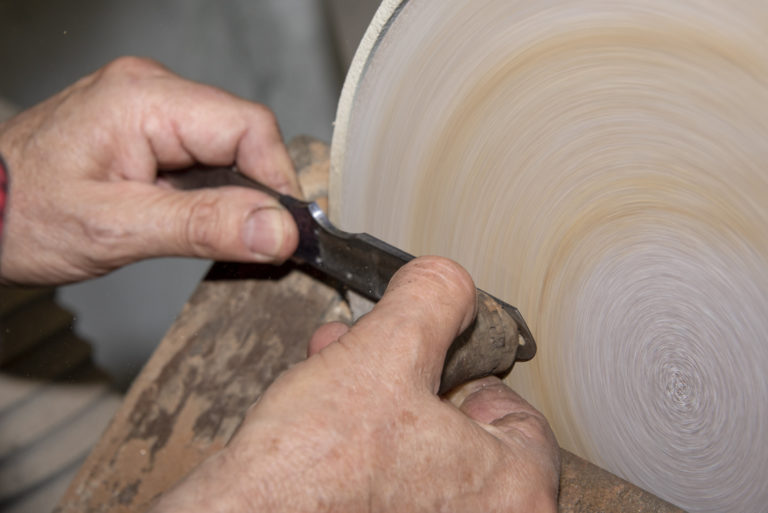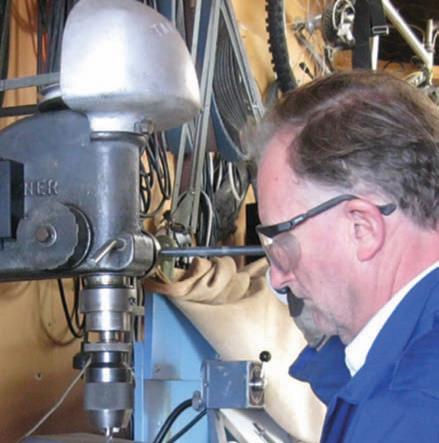How you too can shed some light on the table of your drill press.
By Trevor Nixon
Working in poor light is not to be recommended, especially when dealing with power tools.
I have a number of drill presses in my shed and realised that it’s not always easy to see what you’re doing. Sometimes you have to move around while operating the drill, so your own shadow can become a nuisance if it falls across the work area.
The answer came like a light bulb. In fact, it was a light bulb – one that fits snugly under the top of the drill press and shines on the complete work area below, with little or no chance of casting unwanted shadows. It’s easy to make, as you can see from the step-by-step pictures.
One of my drill presses has a switchplate on the side, held in place by two screws – quite common, I would imagine.
I decided to use these screws as a mounting to hold a light bulb. The switch is arbitrary. You could use a lamp holder with built-in switch, wire one into the cable, or use the switch at the socket where the plug is, which is the system I chose in the end. It just depends what system you use.
Not wanting to spend a lot, I chose to recycle some fl ashing that I rescued from a skip I was passing one day (these things always come in useful sooner or later), and from there the steps are easy to follow.
Find the best place on your drill press to mount the light. This could be the switchplate, or if there’s a cavity directly underneath the top of the press, you might be able to squeeze a lamp in there. I have lights on all three on my drill presses, and on one I have installed one inside the cavity. Obviously if you have to drill holes in the drill press body itself it would pay to know what’s behind it first.
Measuring switchplate
Cut the flashing.
Square off the metal.
MEASURING
Measure the distance across the switchplate, so you know how wide the lamp-holder will need to be. Measure the vertical length as well… it need be only big enough to accommodate the lamp-holder. Any bigger and it might get in the way of your drilling. Then cut your metal to size.
Measure the distance of the outside of the mounting screws on the switchplate and mark this on the top of your holder plate.
Drill an appropriate size hole in your metal plate to accommodate the lamp-holder. Measure and nib out an area on the top of your lamp-holder plate to allow the wiring on the switch plate to come across unimpeded by the lamp-holder..
Drill a hole for the lamp.
Nib out space for switchplate wires.
Remove the screws from the switchplate and slide your plate under to mark where to drill the screw holes.
Punch the screwholes centres in the plate and then drill the screwholes. Score along on the inside of the plate ready to fold it over in the vice later (this is just to make it look nice).
Snip the two bottom corners off diagonally then fold the fl ashing over in the vice and you’ll get a neat finish.
Attach your lamp plate to the switch plate using the original screws.
Score plate for bending.
Drill out screwholes.
Snip corners.
Bend plate.
WIRING
I rescued a pre-sealed plug and cable from a home appliance, so no wiring of the plug was necessary. Strip the plastic off the wires, twist them and fold them over and attach them to lamp-holder, making sure you slide the lamp-holder screw-top over the cable first.
Now it’s time to place the lamp-holder into the hole of your metal plate and secure it in place with the collar from the other side.
Insert a bulb (I use a 40 watt bulb), plug in and switch the power on. Now you can make light work of your next project
Attach lamp plate.
Attach lamp.
Wire up light attachment.
Fix lamp in place.




